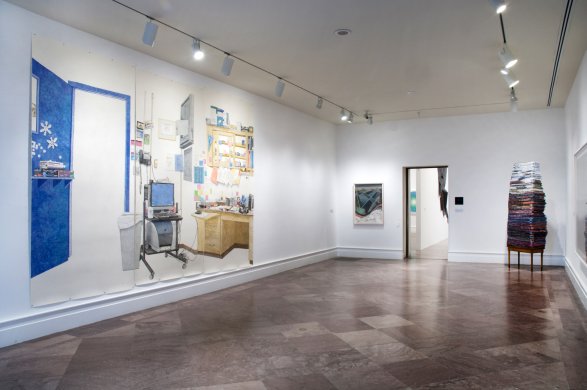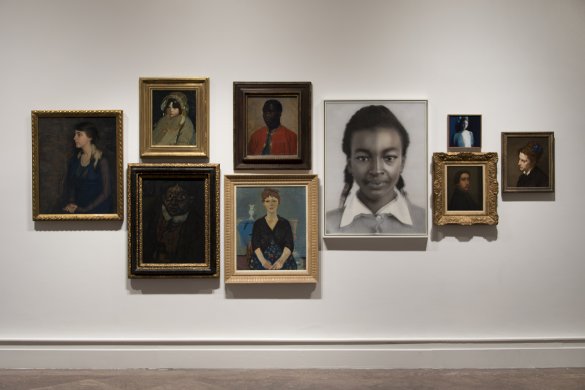Byron Kim
American, born 1961

Synecdoche, 2008
Artwork Details
Collection Highlight
Materials
thirty-six panels: oil and wax on wood
Measurements
each (panel): 10 x 8 inches (25.4 x 20.32 cm)
Collection Buffalo AKG Art Museum
Credit
Bequest of Arthur B. Michael, by exchange, 2008
Accession ID
2008:15a-jj
While the components of Byron Kim’s Synecdoche at first appear to be nonrepresentational monochromatic paintings, according to the artist, each panel “is a close approximation of the color of the skin of a person I have met.” They are part of an ongoing series that now comprises more than four-hundred such portraits of Kim’s friends, family, neighbors, and fellow artists, as well as strangers. The work’s title refers to a figure of speech by which a part of something is used to refer to or represent the whole. The Albright-Knox’s panels are the result of two trips the artist made to Buffalo in August 2008 and May 2009 to consult with the thirty-six members of the museum’s Board of Directors. During Kim’s meeting with each individual, he blended paint to match the color of his or her skin. This was done while examining a part of each subject’s body—the inside of a wrist or behind the ear, for example—that was purer in tone and less impacted by outside forces, such as the sun. Once back in his studio, Kim made two paintings of every individual. One copy came to the museum and the other joined the master group in the collection of the National Gallery of Art in Washington, D.C.
While the premise and content of this work points to larger issues of race, community, and multiculturalism, Kim also pays homage to the history of painting, hovering on the periphery of influences from the varied surfaces of Abstract Expressionism to the paired-down aesthetic of Minimalism. However, because his imagery is based in reality, the artist has said that he “avoided going straight into abstraction and so . . . ended up sort of meandering around it.”



